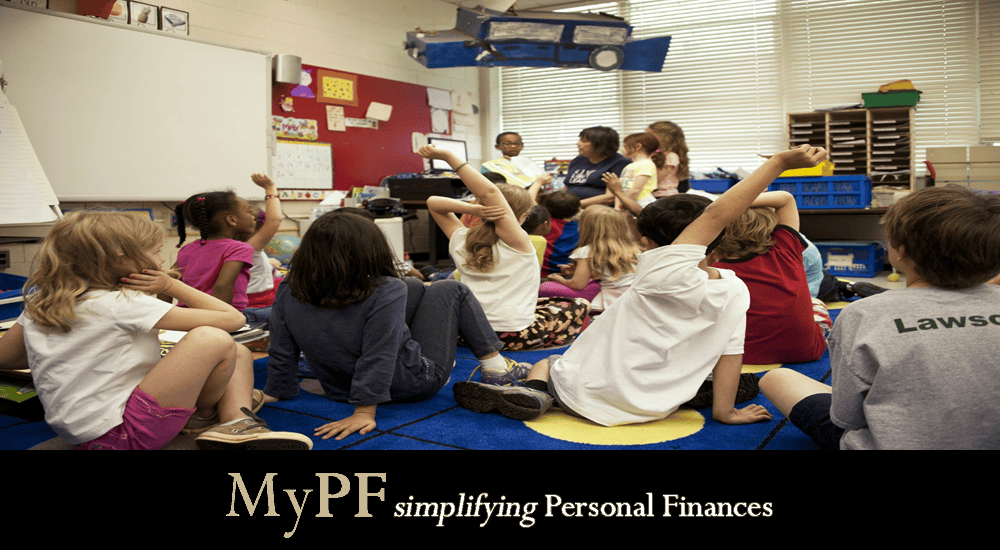Preparing for your teenager’s schooling? This series explores the fees incurred for your children’s schooling. Welcome to Part 3 – about secondary education costs in Malaysia.
Phew! If you are still here, kudos to you. Part 1 and Part 2 covered the education costs for kindergarten and primary level respectively. Part 3 will address the education cost at the secondary levels.
There are more and different things to consider as your child progresses through secondary school.
Just like how a baby bird is brought up by its parents, secondary level is the period where the baby bird grows up and learns to fly. The parents are still keeping an eye, but slowly, they are letting it go and learn to navigate the world on its own.
Contents
#1. What Does Secondary Education Involve?
Let’s start from the secondary level first. There are 5 years in total – Form 1 to Form 5. Or, if you opt for the O-levels pathway, you have Year 7 to Year 11.
At this age, your child will be exposed to even more subjects and courses compared to primary level. However, it is still compulsory for them to take these six main subjects:
- Bahasa Malaysia
- English
- Mathematics
- History
- Moral (for non-Muslims), Agama (for Muslims)
- Science (different for science- and art-stream students)
Other than that, secondary school provides a myriad of other subjects (at least 28) also for your children to learn.
#2. Government Options
There’s actually many secondary school options funded by the government. Most of them are free or incurs minimal charges. Here is the full list. We will cover the 3 main highest enrollment – national secondary school, religious school, and vocational colleges and technical institutes.
- National Secondary School (Daily)
- Fully Residential School (SBP)
- Art School
- Sports School
- Religions Secondary Schools (SMKA)
- MARA Science Junior College (MRSM)
- Vocational Colleges and Technical Institutes
- Royal Military College (MTD)
- Government Aid Religious School (SABK)
A. National Secondary School (SMK)
More commonly known as Sekolah Menengah Kebangsaan (SMK), they mainly consist of national secondary schools that uses Bahasa Malaysia as the teaching language. About 90% (or 1.8 million) of students in Malaysia go to SMKs.
For a list of SMKs in Malaysia, you can find them here for all the states.
B. Religions Secondary Schools
Religious schools are more popular as students go to the secondary level. They come in second after SMKs with about 5% of total secondary school students enrollment in 2022.
There are about two types of religious schools here that you should know.
Firstly, there are the National Religious Secondary Schools (or Sekolah Menengah Kebangsaan Agama, SMKA) that are essentially boarding schools. And they teach two curriculums – religious and Tahfiz Model Ulul Albab streams.
Secondly, there are the Government-Assisted Religious Schools or GARS in short. You might have remembered this acronym from part 2 here. It teaches two curriculums also, namely Dini and Tahfiz Integrated streams.
C. Vocational Colleges and Technical Institutes
By the secondary level, your child will probably have some idea on what he or she wants to do. And if they want to jump straight into their interest, you could consider vocational colleges and technical institutes.
It is a fairly popular option now, with about 3% of total secondary school enrollment in Malaysia. This education is essentially a ‘short-cut’ to the job market as the skills that you gain from here are directly required by the various Malaysian industries.
There are two types here.
- Sekolah Menengah Teknik: It has specialisation in Science, Technology, Engineering and Mathematics (STEM) fields where students will also sit for Sijil Pelajaran Malaysia (SPM).
- Vocational College: Geared for students who want to achieve a Sijil Kemahiran Malaysia (SKM). We have previously covered this in a piece here for students who didn’t achieve good results in the conventional education pathway.
#3. Private Options
The private option for secondary school are for those with different appetites, usually with a higher cost involved. Generally, there are five options outlined by the government
- Chinese Private Secondary Schools (SMPC)
- International Schools
- Expatriate Schools
- Academic Secondary Schools
- Religious Secondary Schools
We will cover the top 2 which are Chinese private secondary schools, and international and private schools.
A. Chinese Private Secondary Schools
Many Malaysians who opt for Chinese private secondary schools (SMPC) do so if their children went for Chinese primary schools and would like to continue. About 76,000 students are enrolled in SMPCs in 2023. Students here will take the Unified Examination Certificate (not recognised in Malaysia, but recognised by some institutions overseas) and the national examinations (SPM).
Tuition fees could range from RM4,550 per year to RM6,000 per year for schools in Selangor and KL.
B. International and Private Schools
There isn’t much distinction between these two these days. Many private schools are changing their offerings from our government syllabus to international syllabus now. It is estimated that there are around 54,000 students enrolled in these schools.
They typically offer international syllabus such as O-levels (from Year 7 to Year 11). Tuition rates ranges from RM38,000 to RM44,000 a year depending on the level of secondary school education.
#4. Tax Relief and Government Assistance
Similar to primary schooling, you are eligible to claim up to RM8,000 for National Education Savings Scheme (SSPN). SSPN is an education fund managed by PTPTN and is meant to fund your children’s education in the future.
The Underprivileged Student Trust Fund (KWAPM) will still apply for low-income students up to Form 3 for RM150. If you have an emergency, you can apply for RM300 as it’s open to all secondary school students also.
Secondary school is also the time to start thinking about scholarships. There are a couple of options namely:
- The Federal Territory Foundation can be visited here.
- The Johor Education Foundation can be visited here.
- The Selangor Foundation can be visited here.
#5. Hidden Costs to Look Out For
Similar to primary schooling, there are hidden costs associated with secondary schooling. According to the Department of Statistics Malaysia, it was estimated that children aged 1 to 14 spent about RM1,141 per month in total on transport (RM641), insurance & financial services (RM222), clothing & footwear (RM163), and education services (RM115).
There is an additional aspect that you need to consider. Secondary school results are key to determine your child’s path for tertiary education. Hence, additional tuition classes will be important. Tuitionmall offers a rough guide here to the tuition rate, which is around RM35 to RM45 per hour. Depending on the hours, tuition costs per month could range from RM210 per month to RM720 per month.
We have assumed about RM720 per month which translates to about RM8,640 per year.
#6. The Estimated Total Cost
What is the ballpark figure that you are looking at?
RM111,600 to RM331,660 for five years of secondary education.
Hidden costs of about RM111,600 if you take the free government option and RM220,000 for international / private school tuition fees + hidden cost of RM111,600.
Conclusion
Secondary school represents the stage before you send your child to university. There are a lot of options and you would have to determine the best career pathway for your child.
How much will you probably be spending for your child and why?
You May Also Like
- Preparing Financially for Your Children’s Education – Part 1: Kindergarten Years
- 5 Steps to Prepare for Your Child’s Educational Future
- 4 Tips to Reduce Your Children’s Primary and Secondary Education Cost
- 5 Hidden Costs of Your Children’s Primary and Secondary Education
- 4 Considerations for Your Children’s Education












Leave A Comment